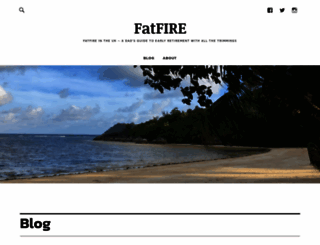FatFIRE in the UK - A Dad's guide to early retirement with all the trimmings
Page Load Speed
2.3 sec in total
First Response
9 ms
Resources Loaded
1 sec
Page Rendered
1.2 sec

About Website
Click here to check amazing FatFIRE content. Otherwise, check out these important facts you probably never knew about fatfire.blog
A UK Dad's journey to a comfortable Financial Independence and FatFIRE with two kids and middle class expenses.
Visit fatfire.blogKey Findings
We analyzed Fatfire.blog page load time and found that the first response time was 9 ms and then it took 2.3 sec to load all DOM resources and completely render a web page. This is quite a good result, as only 45% of websites can load faster.